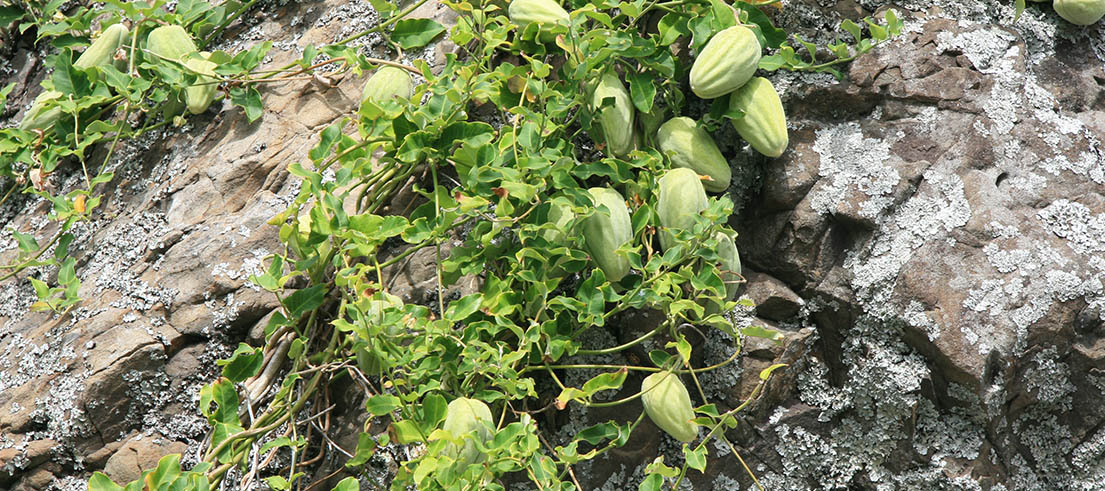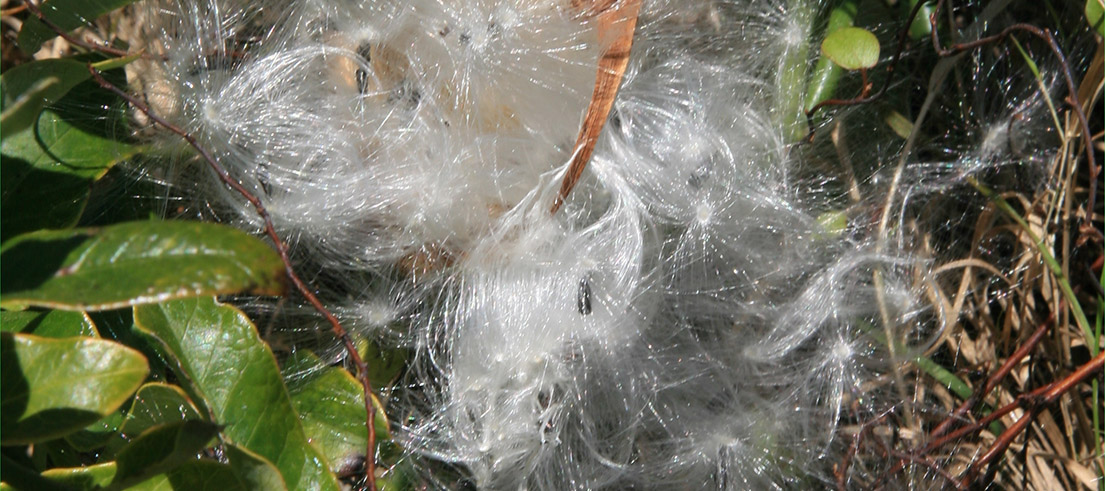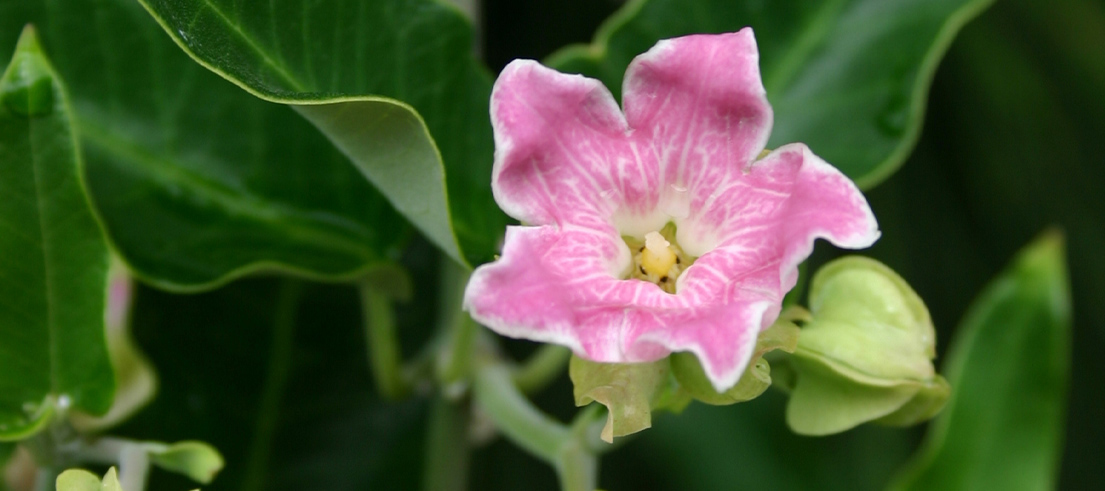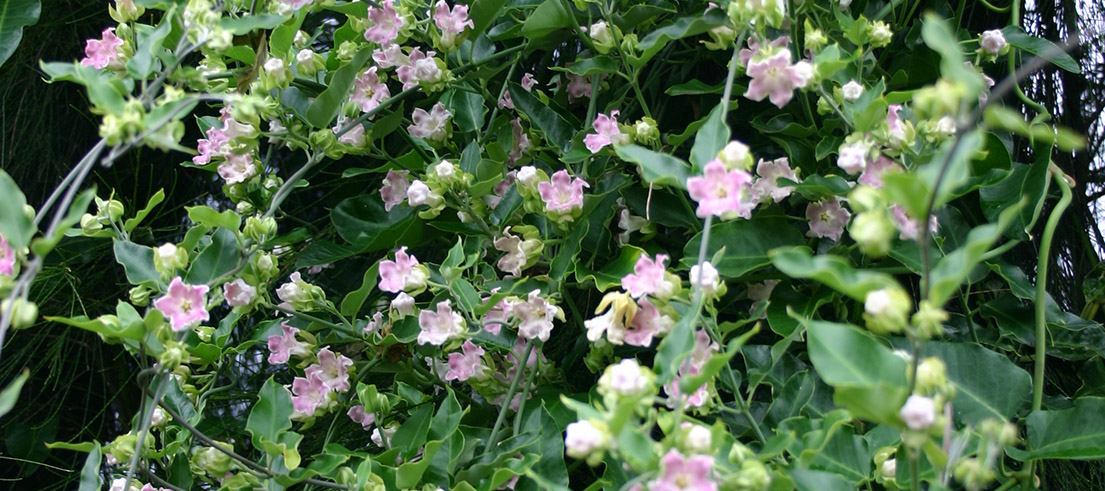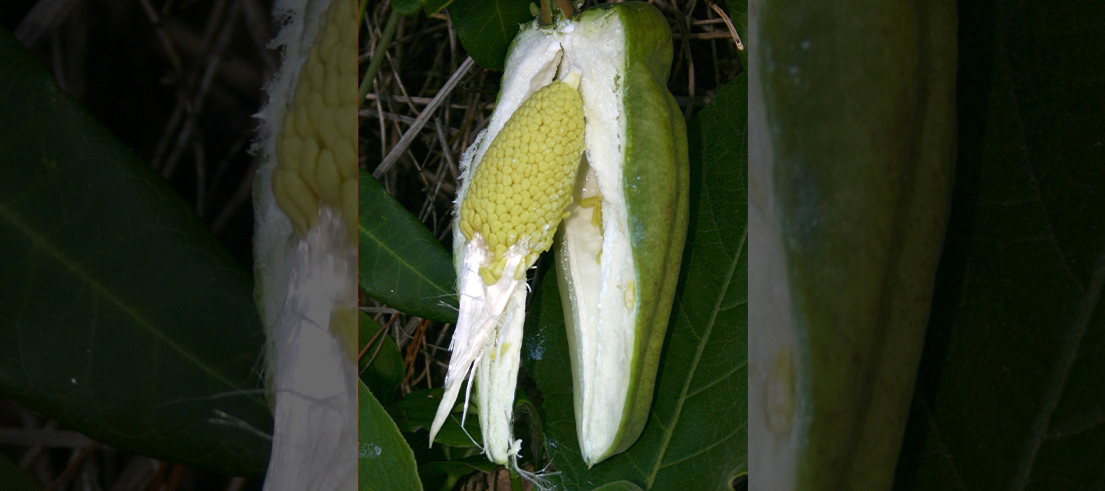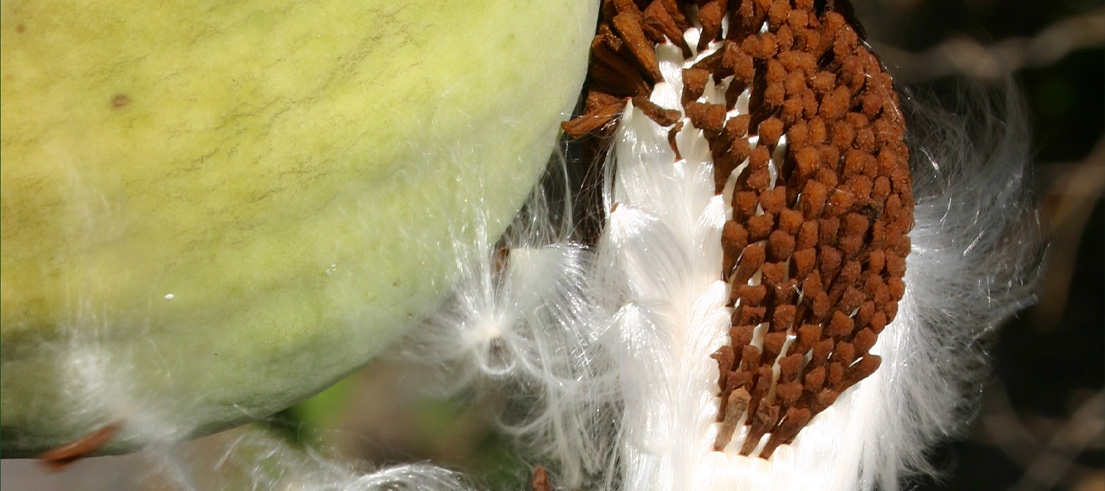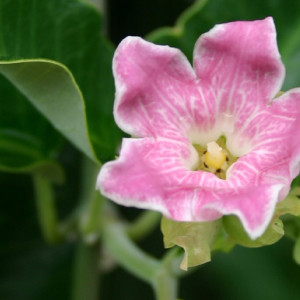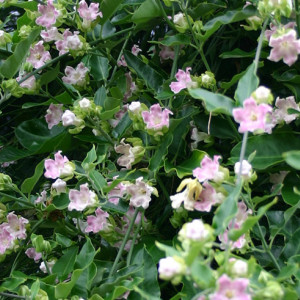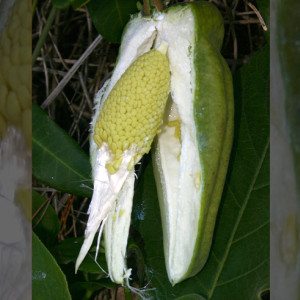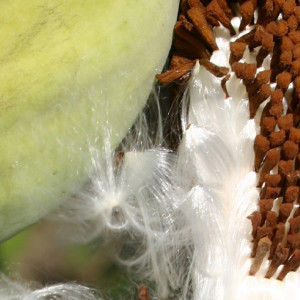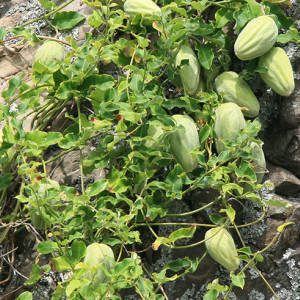Moth plant smothers native vegetation, preventing establishment of other seedings. The poisonous milky latex-like stems, leaves, and roots can cause dermatitis.
Description
- Perennial climbing vine with milky sap/latex.
- Stems are twining, scrambling and woody.
- Leaves are entire, less than 10cm long and opposite, with dull green tops and grey undersides.
- Flowers are white or pale pink. Fruit is fleshy, leathery and pear-shaped.
- Seeds are dispersed by wind and water.
- Habitats include forests, forest margins, tracks, coastlines, cliffs, shrublands, mangroves, wastelands, orchards, and urban areas.
What you need to know
Smothers native vegetation and prevents the establishment of seedlings. Potential to catastrophically impact forest structure. Poisonous milky latex in stems, leaves and roots can cause dermatitis.
Management approach
This is a declared pest managed under the Canterbury Regional Management Plan 2018 – 2038 (PDF file, 10.6MB) within the eradication programme.
Eradication
Pests in the eradication programme are present in low numbers or have limited distribution within Waitaha/Canterbury and eradication is feasible.
The community should make us aware of any moth plants in Waitaha/Canterbury. We will work with affected landowners to undertake control of moth plant.
Moth plant is an unwanted organism regulated under the National Plant Pest Accord.
Rules
Any species declared a pest cannot be sold or be in a place where plants are being sold. Pest plants cannot be propagated, bred, multiplied, communicated, released, caused to be released, or otherwise spread.
Control
Do not attempt to undertake control of moth plant yourself. Please report any sightings to us.
Safety notes
Sap is an irritant.

